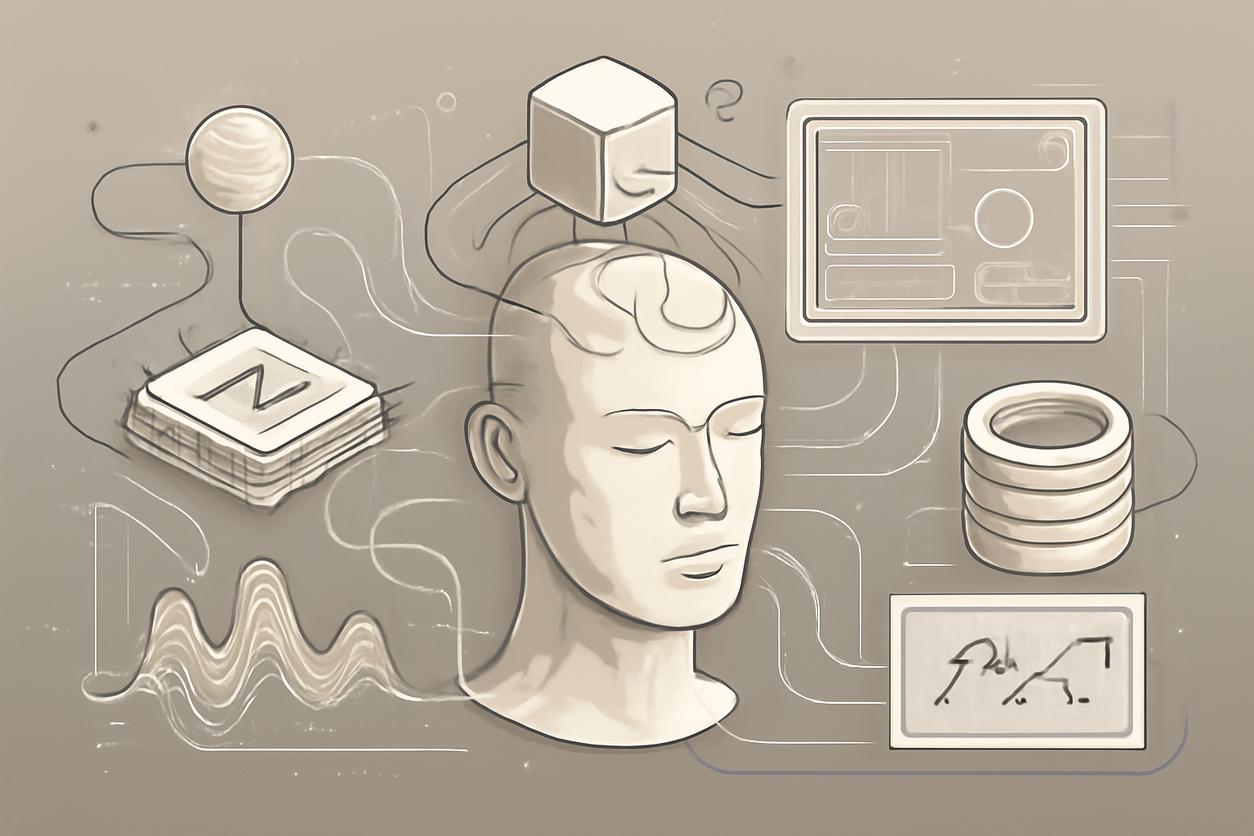Driving Business Value with AI Innovation: A 2025 Strategic Roadmap
Table of Contents
- Executive summary: What AI innovation means now
- Core techniques transforming industries
- Responsible AI: governance and ethics
- Implementation roadmap from pilot to scale
- Compact case studies with outcomes and lessons
- Common deployment pitfalls and mitigations
- Measuring value: KPIs and success signals
- Practical templates and next steps
- Appendix: curated resources and references
Executive summary: What AI innovation means now
Artificial Intelligence (AI) has transcended its origins as a niche discipline to become a foundational driver of business transformation. Today, AI innovation is no longer about isolated experiments; it is about the strategic integration of intelligent systems to create sustainable competitive advantages. For technical leaders, product managers, and strategic decision-makers, mastering AI innovation means understanding not just the technology itself, but also the ethical frameworks, deployment roadmaps, and value measurement required to deliver tangible outcomes. This guide provides a pragmatic, comprehensive roadmap for navigating the complexities of AI adoption, moving from initial concept to scalable, value-driven implementation. True AI innovation is the thoughtful application of these powerful tools to solve real-world problems, enhance human capabilities, and unlock new avenues for growth.
Core techniques transforming industries
At the heart of modern AI innovation are several core techniques that have matured significantly, enabling a new wave of applications across diverse sectors. Understanding these pillars is essential for identifying opportunities and making informed strategic decisions.
Neural networks and deep learning
Often considered the bedrock of the current AI boom, Neural Networks are computing systems inspired by the biological brain. Deep learning, which utilizes neural networks with many layers (hence “deep”), excels at finding intricate patterns in large datasets. This capability powers everything from image recognition in autonomous vehicles to advanced medical diagnostics and sophisticated Natural Language Processing (NLP) models. For businesses, this translates into the ability to analyze unstructured data like customer feedback, images, and videos at an unprecedented scale, unlocking insights that were previously inaccessible.
Generative models and applied use cases
A significant leap in AI innovation has come from generative models. Unlike traditional AI that analyzes or classifies data, these models create new, original content. Techniques like Generative AI are now used for more than just creating art or text. Practical business applications include:
- Synthetic Data Generation: Creating realistic, anonymized datasets for training other AI models, especially in privacy-sensitive domains like healthcare and finance.
- Product Design and Prototyping: Rapidly generating and iterating on design concepts for physical products, user interfaces, and architectural plans.
- Personalized Content Creation: Automating the generation of marketing copy, product descriptions, and customer communications tailored to individual preferences.
- Drug Discovery and Materials Science: Simulating and proposing novel molecular structures and materials with desired properties.
Reinforcement learning in production
Reinforcement Learning (RL) is a paradigm where an AI agent learns to make optimal decisions by performing actions in an environment and receiving rewards or penalties. It is the core technology behind AI that can master complex games, but its real-world impact is growing rapidly. In production environments, RL drives AI innovation in:
- Dynamic Pricing: Adjusting prices in real-time for e-commerce, travel, and energy markets based on supply, demand, and competitor behavior.
- Supply Chain Optimization: Managing inventory, routing logistics, and optimizing warehouse operations in dynamic, unpredictable environments.
- Robotics and Autonomous Systems: Training robots to perform complex tasks like assembly, navigation, and manipulation in unstructured settings.
- Resource Management: Optimizing the allocation of resources in data centers, telecommunication networks, and manufacturing plants.
Responsible AI: governance and ethics
As AI becomes more integrated into business processes, the need for robust governance and ethical considerations becomes paramount. A commitment to Responsible AI is not just a matter of compliance but a critical component of building trust with customers and mitigating brand risk. An effective AI innovation strategy must incorporate an ethics and governance checklist from the outset.
- Fairness and Bias Audits: Actively test models for demographic, societal, and other biases. Ensure training data is representative and implement bias mitigation techniques before and after deployment.
- Transparency and Explainability (XAI): For critical decisions, especially in finance and healthcare, use models that can provide clear explanations for their outputs. Document model behavior and decision-making logic.
- Data Privacy and Security: Uphold stringent data privacy standards. Employ techniques like differential privacy and federated learning to train models without centralizing or exposing sensitive data.
- Accountability and Governance Framework: Establish clear lines of ownership for AI systems. Create an internal review board or ethics committee to oversee high-impact AI projects and set organizational policies for AI innovation.
- Human-in-the-Loop (HITL) Oversight: Design systems where humans can intervene, override, or shut down AI-driven processes, particularly in high-stakes applications. Ensure that final accountability rests with a human decision-maker.
Implementation roadmap from pilot to scale
Transitioning an AI innovation from a promising pilot to a scalable, production-grade solution requires a structured and disciplined approach. This roadmap outlines the critical stages for successful deployment.
Data readiness and infrastructure checklist
A successful AI strategy is built on a foundation of high-quality, accessible data and a robust infrastructure. Before embarking on model development, ensure your organization is prepared.
- Data Quality and Availability: Are the necessary datasets accurate, complete, and readily accessible? Have you established data collection pipelines?
- Data Governance: Is there a clear policy for data ownership, usage rights, and privacy compliance?
- Infrastructure Scalability: Does your compute and storage infrastructure (cloud or on-premise) support the demands of both model training and inference at scale?
- Tooling and Platforms: Have you selected the appropriate MLOps platforms and tools to manage the entire model lifecycle, from experimentation to deployment and monitoring?
Model validation and continuous monitoring
Deploying a model is not the end of the journey. Continuous oversight is essential to ensure performance, reliability, and relevance over time. Effective AI innovation depends on this long-term management.
- Robust Validation: Test the model not only on standard metrics like accuracy but also for its robustness against unexpected inputs, its fairness across different user groups, and its security against adversarial attacks.
- Staged Rollout: Deploy the model incrementally, starting with a small user group (canary release) or by running it in shadow mode to compare its decisions with existing processes before a full-scale launch.
- Continuous Monitoring: Implement automated monitoring to track key performance metrics and detect issues like model drift (degraded performance as real-world data changes) and data drift (a change in the statistical properties of the input data).
- Feedback Loops: Create mechanisms to capture feedback on model performance from end-users and business stakeholders to inform future iterations and retraining cycles.
Compact case studies with outcomes and lessons
Examining real-world applications provides invaluable insight into successful AI innovation.
Case Study 1: Predictive Maintenance in Manufacturing
- Challenge: A heavy equipment manufacturer faced costly, unplanned downtime due to unexpected machine failures.
- AI Solution: Deployed an AI model that analyzed sensor data (vibration, temperature, pressure) from machinery in real-time to predict potential component failures before they occurred.
- Outcomes: Reduced unplanned downtime by 30%, decreased maintenance costs by 15%, and extended the operational lifespan of critical equipment.
- Key Lesson: The success of the AI innovation hinged on integrating high-quality, real-time sensor data and ensuring the maintenance team trusted and acted on the model’s alerts.
Case Study 2: Personalized Customer Engagement in Retail
- Challenge: A large e-commerce platform struggled with low customer engagement and cart abandonment rates due to generic marketing.
- AI Solution: Implemented a deep learning-based recommendation engine that analyzed browsing history, purchase data, and user context to provide highly personalized product recommendations and promotional offers.
- Outcomes: Increased average order value by 12%, boosted conversion rates by 8%, and significantly improved customer retention.
- Key Lesson: Value was realized by focusing on the entire customer journey, not just a single touchpoint. Continuous A/B testing was crucial for refining the personalization algorithms.
Common deployment pitfalls and mitigations
Many AI innovation projects fail to deliver on their promise. Anticipating common pitfalls is the first step toward mitigating them.
| Pitfall | Potential Impact | Mitigation Strategy for 2025 and Beyond |
|---|---|---|
| Lack of Clear Business Objective | Developing a technically impressive model that solves no real business problem, leading to zero ROI. | Start with a specific, measurable business problem. Define success KPIs before writing a single line of code. Ensure alignment between technical and business teams. |
| Poor Data Quality or “Data Silos” | The model underperforms or produces biased results (“garbage in, garbage out”). | Invest in a unified data governance strategy. Prioritize data cleansing and preparation as a core project phase. Implement a modern data stack that breaks down silos. |
| Skills Gap and Cultural Resistance | Lack of internal expertise to build and maintain AI systems; resistance from employees who fear being replaced. | Invest in upskilling and reskilling programs. Frame AI innovation as a tool for augmenting human capabilities, not replacing them. Foster a culture of data literacy and experimentation. |
| Failure to Plan for Scale | A successful pilot cannot be deployed widely due to infrastructure limitations or technical debt. | Design for scale from day one. Utilize cloud-native architectures and MLOps principles to ensure reproducibility, scalability, and maintainability. |
Measuring value: KPIs and success signals
The ultimate goal of AI innovation is to create business value. Measuring success requires moving beyond technical metrics like model accuracy and focusing on key performance indicators (KPIs) tied directly to strategic objectives.
- Operational Efficiency: Measure reductions in operational costs, time saved on manual tasks, and improvements in asset utilization. For example, hours of manual work automated per week.
- Customer Experience and Engagement: Track metrics like customer satisfaction (CSAT) scores, net promoter score (NPS), customer lifetime value (CLV), and conversion rates.
- Revenue Growth: Attribute new revenue streams or uplift in existing ones directly to AI-driven initiatives, such as personalized recommendations or dynamic pricing strategies.
- Risk Reduction: Quantify the value of AI in areas like fraud detection (e.g., reduction in fraudulent transaction value) or supply chain resilience (e.g., reduction in stockouts).
Practical templates and next steps
Embarking on your AI innovation journey requires a clear, actionable plan. Use this template as a starting point to structure your initiative.
AI Innovation Kickstart Template
- Problem Identification (Weeks 1-2):
- Identify 3-5 high-value business problems where AI could provide a solution.
- For each, define the desired outcome and the primary success metric (e.g., “reduce customer churn by 5%”).
- Feasibility Assessment (Weeks 3-4):
- Evaluate data availability and quality for the top-priority problem.
- Assess the technical feasibility and required resources (skills, tools, infrastructure).
- Conduct an initial ethical review to identify potential risks.
- Pilot Project Scoping (Weeks 5-6):
- Define a small, manageable scope for a proof-of-concept (PoC) or pilot project.
- Set a clear timeline (e.g., 90 days) and assemble a cross-functional team (product, data science, engineering, business).
- Execution and Iteration (Weeks 7-12):
- Develop the pilot model, focusing on delivering a minimum viable product (MVP).
- Continuously test and validate the model against predefined success metrics.
- Present initial findings to stakeholders and create a roadmap for scaling if successful.
Appendix: curated resources and references
For those looking to deepen their understanding of the core concepts discussed, these resources provide a foundational starting point:
- AI Ethics: https://en.wikipedia.org/wiki/AI_ethics
- Autonomous Systems: https://en.wikipedia.org/wiki/Autonomous_robot
- Generative AI: https://en.wikipedia.org/wiki/Generative_adversarial_network
- Natural Language Processing: https://en.wikipedia.org/wiki/Natural_language_processing
- Neural Networks: https://en.wikipedia.org/wiki/Neural_network
- Reinforcement Learning: https://en.wikipedia.org/wiki/Reinforcement_learning









